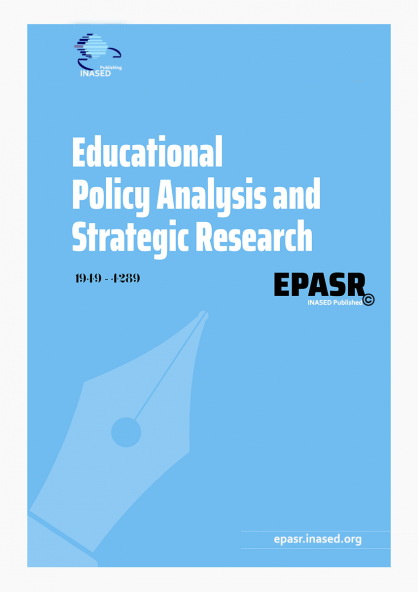Research article | Open Access
Educational Policy Analysis and Strategic Research 2023, Vol. 18(3) 8-20
A Critical Analysis of the Concepts of Identity, Nation, Nationalism in Museum Studies
pp. 8 - 20 | DOI: https://doi.org/10.29329/epasr.2023.600.1
Publish Date: September 30, 2023 | Single/Total View: 155/409 | Single/Total Download: 210/547
Abstract
National identity is a complex and contested issue, and it is often debated in the fields of social and cultural studies. Museum collections, and the way they are presented and interpreted, are closely linked to national identity. National museums, as symbols of national unity, can manipulate perceptions about dominant ideologies and the individual's place in society. This article aims to deepen our understanding of how national museums negotiate and construct national identity by critically analyzing the theories and concepts of nation, nationalism, and national identity.
Keywords: Identity, Nation, Nationalism, Museum Studies, Education
APA 7th edition
Eryaman, M.R. (2023). A Critical Analysis of the Concepts of Identity, Nation, Nationalism in Museum Studies. Educational Policy Analysis and Strategic Research, 18(3), 8-20. https://doi.org/10.29329/epasr.2023.600.1
Harvard
Eryaman, M. (2023). A Critical Analysis of the Concepts of Identity, Nation, Nationalism in Museum Studies. Educational Policy Analysis and Strategic Research, 18(3), pp. 8-20.
Chicago 16th edition
Eryaman, Martina Riedler (2023). "A Critical Analysis of the Concepts of Identity, Nation, Nationalism in Museum Studies". Educational Policy Analysis and Strategic Research 18 (3):8-20. https://doi.org/10.29329/epasr.2023.600.1
- Anderson, B. (1991). Imagined communities: Reflections on the origins and spread of nationalism. London: Verso. [Google Scholar]
- Breuilly, J. (1982). Nationalism and the state. Manchester: Manchester University. [Google Scholar]
- Duncan, C. (1991). Art museums and the ritual of citizenship. In I. Karp & S. Lavine (Eds.), Exhibiting culture (pp. 88–103). Washington, DC: Smithsonian Institute. [Google Scholar]
- Eagleton, T. (2000). The idea of culture. Oxford: Blackwell. [Google Scholar]
- Featherstone, M. (1995). Undoing culture: Globalization, postmodernism and identity. London: Sage. [Google Scholar]
- Gellner, E. (1983). Nations and nationalism. Oxford: Blackwell. [Google Scholar]
- Gellner, E. (1994). Nationalism and high cultures. In J. Hutchinson & A. Smith (Eds.), Nationalism (pp. 63–70). Oxford: Oxford University. [Google Scholar]
- Hall, S. (1992). The question of cultural identity. In S. Hall, D. Held, & T. McGrew (Eds.), Modernity and its futures (pp. 273–325). Cambridge, UK: Polity. [Google Scholar]
- Hobsbawm, E. (1990). Nations and nationalism since 1870: Programme, myth, reality. Cambridge: Cambridge University Press. [Google Scholar]
- Hobsbawm, E., & Ranger, T. (Eds.). (1983). The invention of tradition. Cambridge: Cambridge University. [Google Scholar]
- Kedourie, E. (Ed.). (1960). Nationalism. London: Hutchinson. [Google Scholar]
- Lumley, R. (1988). The museum time machine: Putting cultures on display. New York: Routledge. [Google Scholar]
- Macdonald, S. J., & Fyfe, G. (Eds.). (1996). Theorizing museums: Representing identity and diversity in a changing world. Oxford: Blackwell. [Google Scholar]
- McIntyre, D., & Wehner, K. (Eds.). (2001). National museums: Negotiating histories. Canberra: National Museum of Australia. [Google Scholar]
- Smith, A. D. (1999). Myths and memories of the nation. Oxford: Oxford University. [Google Scholar]
- Smith, A. D. (2000). The nation in history: Historiographical debates ethnicity and nationalism. Hanover, NH: Brandeis University. [Google Scholar]
- Smith, A. D. (2004). The antiquity of nations. Cambridge, UK: Polity. [Google Scholar]
- Trofanenko, B. M. (2008). More than a single best narrative: Collective history and the transformation of historical consciousness. Curriculum Inquiry 38(5), 579–603. [Google Scholar]
